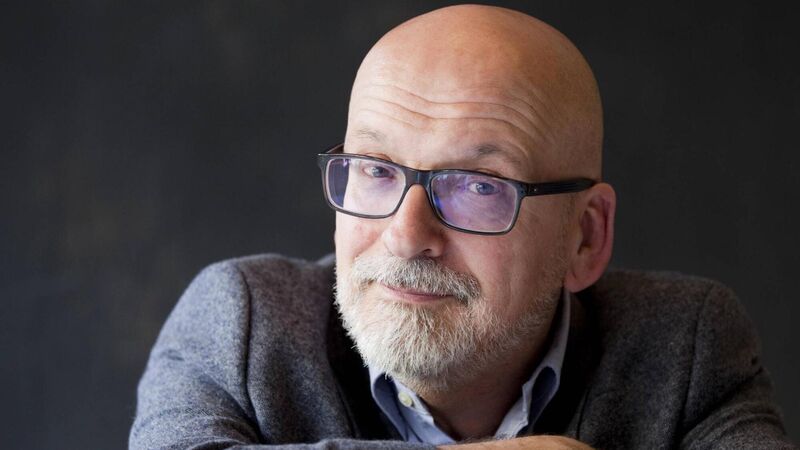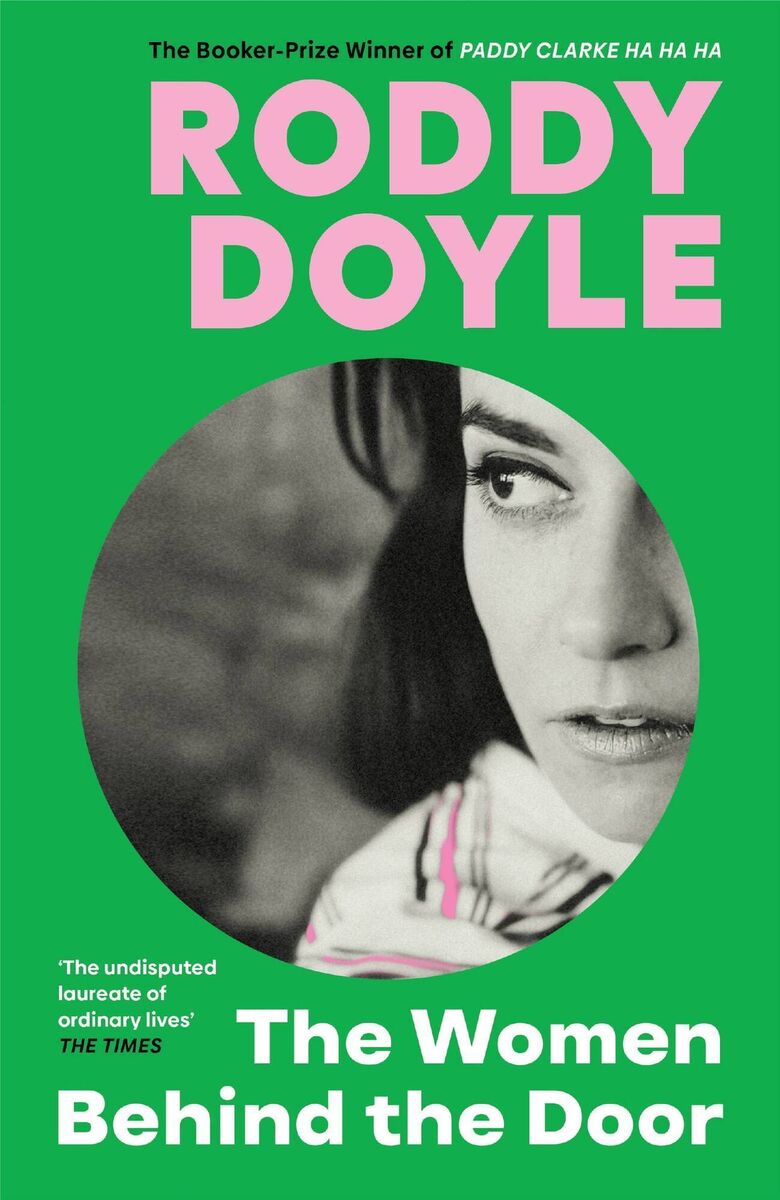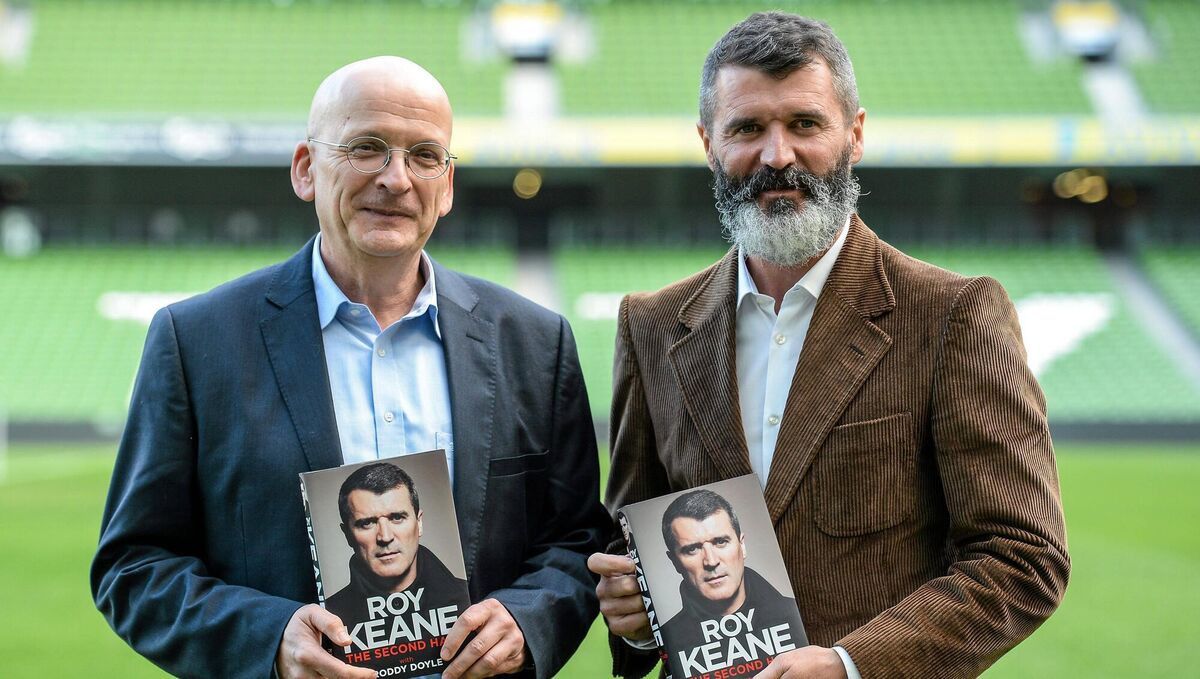Author interview: Roddy Doyle on the unexpected side-effect of working with Roy Keane

Roddy Doyle: 'Paula is the same age as myself, so there’s that affinity. I know her well at this stage and her geography is very close to mine.' File picture: Getty
- The Women Behind the Door
- Roddy Doyle
- Penguin, €16.99
Roddy Doyle has come in on the bus from his home on the northside of Dublin to meet me in the city centre. On one level at least, the 66-year-old author is happy to be reaping the benefits of reaching pension age.
“It’s not the money, it’s just the freedom of it, really. It’s like a present from the State. Granted, we paid enough tax to merit it.”
“That wasn’t occurring to me as I was writing it. On a creatively personal level, I had written , , and , about an emotionally successful family [the Rabbittes].
“I had gone back into the past to write and I was finishing that when the invitation to write for the BBC came.
“It struck me that I would write about the Rabbittes’ neighbours, on the same street, where the father isn’t as benign a figure.”
“Paula is the same age as myself, so there’s that affinity. I know her well at this stage and her geography is very close to mine.
“I rarely had to hesitate about what Paula was thinking or saying. Nothing is easy, but the first draft certainly flowed, you know, flowingly,” he laughs.
“There was a doctoral thesis written about , and the conclusion was that I had done a good job, but I wasn’t entitled to do it.
“And that, to me, is an oxymoron. I don’t want to be critical or cranky. If they can keep coming up with new ideas by just staying within their own lane, grand. But don’t tell anybody that they can’t write a certain thing.”
The book begins with Paula getting her first vaccination for covid at DCU — the pandemic also provides the perfect excuse for Paula and Nicola to take refuge behind the door and drill down into the shared trauma of their past.
“It’s no coincidence that I got my first vaccination on the exact same day and in the exact same place as Paula.
“And that’s where I had the idea for the book, but I didn’t write it immediately because I wanted to be sure in my head that we were coming out of covid.
“I had spent a year writing short stories as I didn’t want to write a novel because I didn’t trust the present day, it was changing so much and so quickly.
“And it was like walking through a post-apocalyptic landscape, because there were so few people, and the sound of an engine coming up behind you was quite a shock.”

Reading the book served as a reminder of how time lost all meaning during lockdown. For example, Paula gets her first vaccination in May 2021, and it is hard to fathom that it was over a year between the onset of the pandemic and the arrival of the vaccine.
“I didn’t have to think about children being deprived of friendship, of exercise, the vital social side of school, which often doesn’t get a look in, particularly at secondary level, because it’s all about exams and results, that nonsense.”
Not many sportspeople get to have a Booker Prize winner as a ghostwriter on their autobiography but Cork footballer Roy Keane had that privilege in 2014, when Roddy Doyle collaborated with him on .
Doyle went on to work with Dublin boxer and Olympic gold medallist Kellie Harrington on her autobiography, Kellie, which was published last year.
For Doyle, writing an autobiography was a different kind of beast to fiction.
“With Kellie, it was more flexible because we both live in Dublin, so it was a bit easier.
“With Roy, I think we finally signed the contract in January and we had to deliver it in May. It was very intense.
“That’s the big difference between those two books and the way I normally work — it was really intense, seven days a week.”
Doyle would fly over to meet Keane in Manchester and sometimes the footballer would come to Dublin.

The author also transcribed all his sessions with Keane himself, with entertaining consequences.
“A big part of the job for me was getting Roy’s voice on paper.
“So I was listening to him constantly. My father was in hospital at the time and I remember having worked all day just transcribing.
“I went down to my mother’s house to bring her to the Beaumont Hospital.
“We were chatting away, and she said to me, ‘are you speaking with a Cork accent?’, I was because I had been listening to bloody Roy, more than I was listening to anybody else.”
Working with Keane and Harrington was a hugely rewarding experience, says Doyle.
“In the case of those two books, they were professional highlights. Roy and Kellie are brilliant communicators, and users of the language, they both have a brilliant sense of humour, and know how to use it, not just for a laugh.
“Both of them are so intelligent and they were really eager to do the job. You could tell they were bringing the single mindedness that makes them brilliant sportspeople to the job.”
On a personal level, it was a tough time for Doyle whose father died when he was writing the book. However, the author was grateful that his tales of working with Keane gave a much-needed boost to his father’s spirits when he was gravely ill in hospital.
“My father loved Roy. I remember Roy telling me about the early days when he was managing Sunderland, and the kit man was in charge of the music — he put on Abba’s and he said Roy just watched his team running out on the pitch while listening to ‘Dancing Queen’.
“The way Roy told it, I was listening to it again and again, tears were coming out of me, it was just so funny.
“And I remember telling my father in the hospital. He was in bits at the whole idea of 11 warriors running out to do battle listening to ‘Dancing Queen’.”
- by Roddy Doyle is published by Jonathan Cape and is available now. He will be in conversation with Donal Ryan on November 10. Tickets available from dublinbookfestival.com



